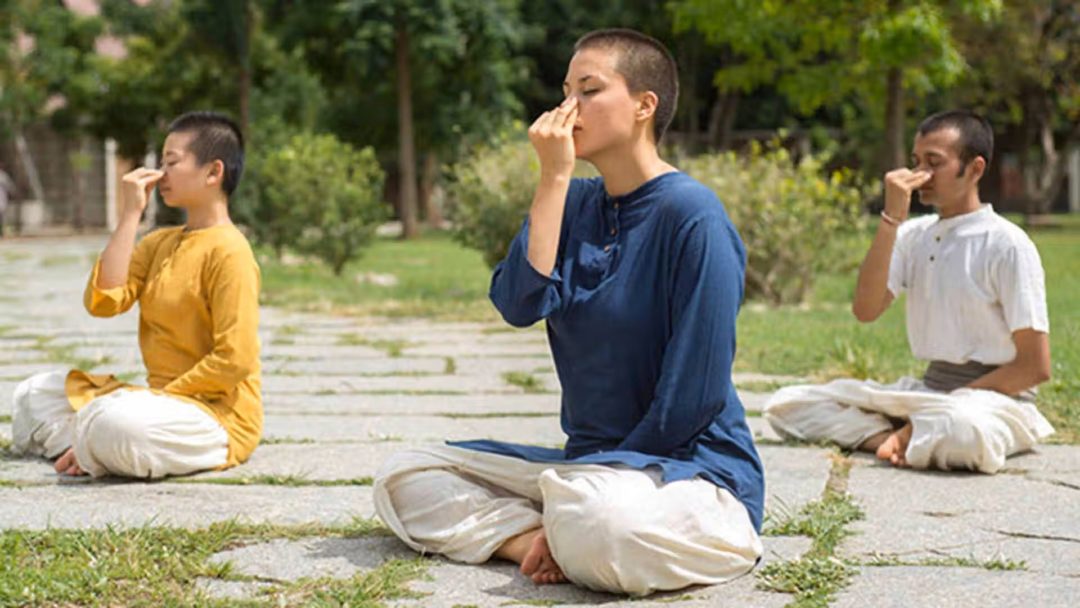
In today’s fast-paced world, where stress and distractions abound, it’s essential to introduce children to practices that promote their overall well-being. Yoga, with its numerous physical and mental health benefits, is an ideal choice. But it raises the question: At what age can children start practicing yoga?
In this guide, we’ll explore when to begin, suitable types of yoga for kids, and the incredible benefits it can bring to their lives.
When to Start and Types of Yoga for Kids:
Yoga can be introduced to children as young as four years old.
At this tender age, simple practices like Isha Sadilaja (Loosening practices) and Thoppukaranam (Brain Yoga) can work wonders.
As children grow older, typically around seven years of age, they can dive into more advanced practices, including:
- Yoga Namaskar: A sequence of yoga postures that offers a complete exercise for the body.
- Upa Yoga: Essentially “sub-yoga” or “pre-yoga,” it’s a simple yet powerful system of exercise that activates joints, muscles, and the energy system. It relieves physical stress and tiredness.
- Surya Shakti: A dynamic form of the Sun Salutation, consisting of a powerful sequence of 18 postures that does wonders for health, both physically and mentally.
- Nada Yoga: Known as the yoga of sounds, it uses the power of sound to activate specific energies in different parts of the body, bringing lasting inner peace.
At the age of Eight years, kids can also start
- Angamardana, is a powerful fitness system rooted in yoga. The beauty of Angamardana is that it needs no fitness equipment and uses one’s own body weight and movements.
Crucial Points to Consider Before introducing yoga to kids
- Expert Supervision: It’s crucial for children to learn yoga under the supervision of a trained instructor to ensure their safety and provide proper guidance.
- Age-Appropriate Practices: Many modern yoga institutes teach practices that may not be suitable for children’s age, which could potentially cause harm and hinder their growth.
- Motivation Over Force: Instead of forcing kids to do yoga, motivate them. If they show partial interest, it’s appropriate to encourage them to begin. However, if they have no interest at all, forcing them can create negative feelings toward yoga and deter them from trying it even as adults.
Benefits of Yoga for Kids:
The benefits of yoga for children are truly remarkable.
Physical Well-being: Yoga plays a pivotal role in the physical development of children. It enhances their flexibility, allowing them to move with grace and ease. Furthermore, it contributes to building their strength.
Mental Agility: Beyond the physical aspects, yoga works wonders for children’s mental faculties. It’s akin to a magnifying glass for their concentration, allowing them to focus and immerse themselves in tasks with precision. Memory receives a significant boost, sharpening their memory tools for better learning.
Emotional Resilience: Yoga is not just about the body and the mind; it also nurtures emotional well-being. It instills a sense of calmness, providing children with emotional stability and self-confidence.
Beyond that, yoga equips kids with essential life skills as they learn to manage stress, which is a valuable skill in today’s fast-paced world. In the face of challenges, they develop resilience, allowing them to bounce back stronger than before.
And the good news is all these listed benefits are just the tip of the iceberg in the vast sea of advantages that yoga offers to children.
By introducing yoga to children at an early age, we empower them to thrive and flourish in today’s challenging world. So, here’s the question for you: Have you considered introducing yoga to the children in your life, and how do you think it could impact their journey?
Share your thoughts and experiences below.





